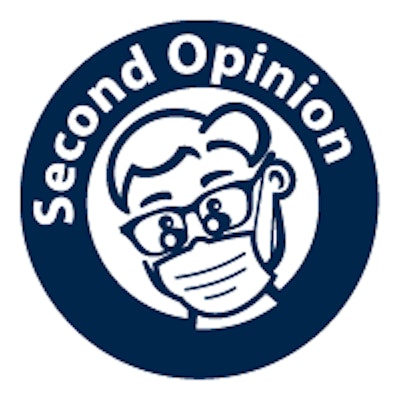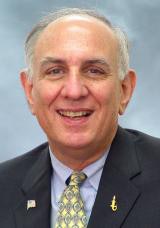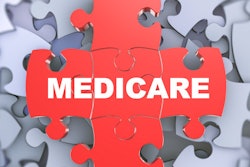
The ADA's recent brief on barriers to dental care shows that cost is a problem even among those who are able to get care. That is an issue that we in the dental community need to study further and find solutions to, and I applaud the ADA for bringing attention to it.
However, the brief also concludes -- in my opinion, based on flawed methodology -- that supply-related barriers aren't much of an issue. This is as disappointing as it is troubling for an organization that describes itself as "a thought leader and recognized authority on critical policy issues facing the dental profession."
 Frank Catalanotto, DMD, chair, Department of Community Dentistry & Behavioral Science, University of Florida College of Dentistry.
Frank Catalanotto, DMD, chair, Department of Community Dentistry & Behavioral Science, University of Florida College of Dentistry.So what's wrong with the ADA brief? The authors of that brief wrote in their discussion: "Supply-related barriers were reported by relatively small percentages of the population and this has declined over time. The overall decline could be due to an increase in the number of dentists during this period of time although further research is needed."
First, the 2011-2012 National Health and Nutrition Examination survey data they base their conclusion on doesn't even ask about several critical supply-related factors. For instance, it never asked about wait times for a routine dental appointment. I think we've all heard this complaint from those outside dentistry -- even those with dental insurance. Another key missing question was whether patients could find a dentist who accepts public insurance such as Medicaid. This is important because more than 1 in 3 kids in America are on Medicaid, according to Kaiser Family Foundation information, and half of those kids were not able to get dental care in 2013, according to a report downloadable from Medicaid.gov. Not unrelated, a recent survey by the Medicaid-CHIP State Dental Association found that less than 30% of dentists filed more than 50 Medicaid claims in 2012.
Another strange feature of the brief is that it fails to account for some basic economic principles. Namely, that supply and costs are related, but the type of provider used for routine procedures impacts those costs. For instance, by using the highest cost provider available for the most routine set of procedures, patients end up paying more. Imagine if a heart surgeon had to spend all day preparing the operating room, or if dentists were still doing most teeth cleanings instead of hygienists. Many decide to forgo that care based on their family budget. A recent policy brief published by the ADA Health Policy Institute stated: "Despite improvements in affordability over the last few years, cost still remains the most critical barrier to obtaining needed dental care."
Nearly 60% of people in the U.S. didn't have a dental visit in 2009, according to a 2012 study in the Journal of the American Dental Association (May 2012, Vol. 143:5, pp. 452-460). That is a significant chunk of our population not getting dental care. The idea that we can educate enough dentists to cost-effectively extend our care and meet the routine needs of this huge, unserved dental market is unrealistic -- especially given the fact that the number of dental health professional shortage areas identified by the federal government in our country has increased over the past decade.
“The idea that we can educate enough dentists to cost-effectively extend our care and meet the routine needs of this huge, unserved dental market is unrealistic.”
Besides these factors, there are other supply-related factors that are impacting dental care. The Patient Protection and Affordable Care Act is allowing more people to gain private dental insurance, and more than 47 million Americans are classified as living in the dentist shortage areas I mentioned previously. In addition, Medicare doesn't cover dental care for seniors, who are keeping their teeth longer. Even if it did, given the challenges of dentists accepting Medicaid and the huge number of seniors that would flood the dental market, it is doubtful many of those seniors could get care. A recent Harris Poll commissioned by Oral Health America concluded that 75% of those adults surveyed delayed dental "care for financial reasons or due to lack of insurance coverage." These are complex issues, but the bottom line is that dentists need more tools to address both cost- and supply-related problems head on.
A proven way for dentists to tackle these problems is through allowing them to hire midlevel providers. Despite a growing movement and substantial evidence on a midlevel provider's ability to increase practice productivity in a financially sustainable way in states where they already exist, the ADA continues to adamantly oppose any effort to evaluate and authorize these professionals at the state and federal level. Thus, ADA's recent brief could be seen by some as promoting politics over data, and the ADA needs to be more careful in the future.
Proponents of midlevel providers often cite supply-related factors such as those above (but dismissed by the ADA) as reasons why dentists ought to be able to hire midlevel providers. This is already happening in some states. Having a midlevel provider on staff is allowing dentists to bring in more patients, extending their care to more people. Dentists have midlevel providers focus on a limited set of procedures -- those that are among the most routine and "lowest" complexity on the scale of procedures a dentist usually provides. Creative dentists among us might even be able to find ways to use midlevel providers to reduce prices to reach non-Medicaid patients (including seniors) who don't have dental insurance.
The potential for extending our care to more people is exciting, but by publishing this research brief as written, the ADA strongly implies no real changes are needed -- especially as related to dentists' options in shaping and expanding their teams. This is unfortunate and, in my opinion negligent, because we have so many that need our care.
Frank Catalanotto, DMD, is the chair of the department of community dentistry and behavioral science at the University of Florida College of Dentistry. His opinions do not reflect the opinions of the University of Florida.
The comments and observations expressed herein do not necessarily reflect the opinions of DrBicuspid.com, nor should they be construed as an endorsement or admonishment of any particular idea, vendor, or organization.



















